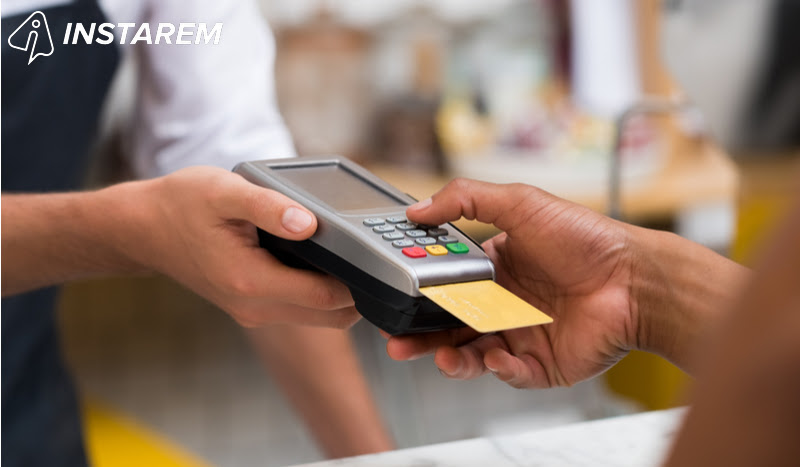
Table of Contents
What Is A Cashless Society/Economy?
Over the past couple of decades, rapid advancements in ‘FinTech’ have reduced the number of cash-based financial transactions in many countries around the world. Many governments and financial authorities are discouraging the use of physical money (banknotes and coins) and encouraging the transfer of ‘digital information’ to conduct financial transactions.
This is exactly what a cashless society/cashless economy is. In a cashless financial system, the circulation and use of cash are eliminated and all payments are made through electronic methods only. These methods include:
- Credit and debit cards
- Card-swipe or Point-of-sales (POS) machines at merchant establishments
- Mobile phone e-wallets or payment apps
- Electronic banking
In a completely cashless society, there would be absolutely no cash in the financial system. Although the world is far from realising a perfectly cashless economy, many countries around the world are already well on their way, including:
- Sweden: The country is one of the world’s most cashless societies. By late 2017, over 95% of financial transactions in Sweden were digital. Back in 2014, 96% of the population had a debit card which meant that non-cash payments had a whopping 89% share in the total value of consumer payments. In addition, notes and coins are banned on public transport and Swedish banks are carrying less cash than ever before.
- Denmark: The central bank stopped printing banknotes in 2016 in a bid to encourage consumers to make more payments through mobile and digital platforms.
- USA: As of 2014, a majority of Americans carried less than $50 cash on their person and at least 50% carried less than $20. With the easy availability of digital wallets and electronic watches with payment capabilities, it is unsurprising that at least 80% of all consumer payments in the USA are made through non-cash means.
- UK: A 2016 study by Mastercard found that the average person in the UK carried less than £5 in cash because at least 88% of the population owns and uses a debit card for financial transactions.
Many other countries are not overly cashless, but are making a concerted and deliberate effort to change the situation:
- Germany: Although traditionally a cash-favouring country, the increasing digitisation of the payments landscape in Germany is pushing more and more consumers towards cashless payments through credit/debit cards, e-wallets, credit transfers and direct debits. In 2016, the total number of electronic payment transactions increased by a respectable 8.1% over the previous year.
- India: In 2016, India pulled all 1,000 and 500 rupee notes from circulation – 86% of the total currency – to curb non-traceable cash transactions, expand mobile and Internet banking, improve economic transparency and weaken the country’s ‘shadow economy’.
- Vietnam: In early 2017, Vietnam announced a new policy to reduce cash transactions and improve the electronic payment infrastructure to make the country cashless by 2020.
- China: As of mid-2018, over 50% of the Chinese population used smartphone-driven cashless payment systems to make more than 80% of purchases on online marketplaces like Alibaba and Tencent.
To know more about some more of the world’s most cashless countries, check out the next section.
Which Are The Most Cashless Countries In The World?
A number of countries, particularly in the developed world, are seeing a fundamental shift to a digital, cashless economy. In addition to the countries already mentioned in the previous section, some of the most pronounced examples of this official push towards ‘cashlessness’ are:
- Singapore: With 61% of consumer payment transactions done through non-cash methods, Singapore is one of the most cashless countries in the world. The largest cashless payment operator in the country is NETS (Network for Electronic Transfers Singapore Pte Ltd). Singapore is also home to InstaReM, a leading digital money transfer firm that provides low-cost, reliable and secure cross-border remittances, with the ability to send money to over 3 billion people worldwide. To learn more about how InstaReM can help YOU be a part of the cashless revolution, click here!
- South Korea: In May 2018, South Korea’s central bank, the Bank of Korea (BOK) launched its cash-free society pilot. As part of this project, it announced that it was exploring possible uses of blockchain applications and cryptocurrencies to reduce the use of cash and eliminate the cash-driven ‘underground economy’.
- Netherlands: Almost 98% of the Dutch population is estimated to own and use a debit card, especially in restaurants and retail outlets, many of which refuse to accept cash. Parking meters also no longer accept cash or coins in payment, pushing the country further towards cashlessness.
- France: In France, banknotes and coins account for a little over 50% of transactions by number but only 15% by total value. Not only is this share much lower than many other OECD countries, it is also continuously declining. In addition, the country has banned all cash transactions exceeding €1,000, a steep reduction from the previous limit of €3,000.
- Belgium: Belgium has also limited cash payments to €3,000 by law. But the country goes one step further: violators of this law could be fined up to €225,000. This rule discourages cash transactions and plays an important role in the national plan to eventually go completely cashless.
What Are The Biggest Drivers Of A Cashless Society?
Illegal activities such as terrorism, drug trafficking and human trafficking are by their very nature cash only. According to Peter Sands, a Harvard University academic, “Drug trafficking is the biggest driver of illegal financial flows and a major source of funding for terrorism. And drug trafficking always ends up in cash at some point in the chain.” Thus, these illegal ‘businesses’ are not only the biggest purveyors and customers of cash; they are also important driving forces that push many governments towards a cashless economy.
Other national goals that are important drivers of a cashless society are:
- To promote financial inclusivity to bring more people under a country’s financial umbrella so they have better access to financial services (banking, credit, loans, etc).
- To increase tax earnings to root out illegally earned and stashed ‘black money’ and identify people who have not paid tax on their earnings.
- To eliminate the shadow economy to curb illegal activities and break up crime networks dependent on cash for all transactions. The shadow economy has implications for a country’s financial progress, social growth as well as overall development.
What Are The Risks Of A Cashless Society?
In the current economic and political climate, a global cashless economy is not without its problems:
The digital/cashless financial system is susceptible to the risk of ‘going offline’. Since digitalisation is so closely tied to the availability and performance of the Internet and power systems, downtime could pose serious problems to the health and future of its financial and economic structures. This is especially true in developing countries where a lack of adequate telecom/Internet infrastructure and frequent blackouts are among the biggest challenges to the adoption of a cashless economy.
Another problem is that the current digital payments environment is too segmented and disparate. Consumers and sellers use multiple payment platforms, each with their own user interfaces and authentication systems which gives rise to multiple friction points during the payment process. This lack of consolidation prevents consumers from enjoying a seamless transactional experience and ultimately prevents the adoption of a truly cashless economy.

Some critics also believe that eliminating cash can lead to unplanned overspending. A 1986 paper by Richard A Feinberg, then an associate professor at Purdue University, found that the availability of credit cards led to an increase in both the size and probability of consumer spending. With plastic becoming more ubiquitous and an important driver of cashless societies in every developed country (and many developing countries as well), it is likely that in future, credit card stimuli-driven spending will only grow in volume. This increase in electronic payments and the move towards a cashless society is already correlated with higher levels of consumer debt and this worrying relationship is likely to get stronger in future.
In many countries, the economy’s purposeful shift away from cash has not necessarily percolated to its marginalised and vulnerable segments such as the elderly, the disabled and the homeless. These sections still depend on physical money, and are, therefore, especially susceptible to becoming victims of crime. More importantly, they are in danger of being pushed to the very margins of the financial utopia that is purportedly the main aim of a cashless society.
Finally, a cashless society is vulnerable to systems breaches and data theft. Until foolproof methods are devised to keep data safe from cybercriminals, critics will continue to quote this issue to shore up their argument against the adoption of a completely cashless society.
What Are The Benefits Of A Cashless Society?
In spite of problems, the advantages of a cashless society seem to outweigh the disadvantages, as long as the implementation is handled correctly and with an eye on the future.
1. Lower Costs
One ‘macro’ advantage of going cashless is that electronic transactions are cheaper than cash transactions because they eliminate the costs associated with the printing, storage and transportation of large amounts of cash. India alone faced an annual currency operating cost of over 21,000 crore rupees ($3394 million) according to a 2014 study by Tufts University. From the individual’s, i.e. ‘micro’ perspective, cashless transactions are usually protected by end-to-end encryption, fraud-preventing technology and digital receipts and, hence, not susceptible to physical theft.
2. Greater Financial Inclusion
The drive towards digitalisation provides a number of easy-to-use digital and contactless payment options which allows for faster and convenient transactions and also enables more individuals to access financial services. In low and mid-income countries such as India, Nigeria, Bangladesh and Kenya, the growth of a cashless society and development of its associated supply-side infrastructure will push digital payment methods into rural areas that had previously accessed credit through informal channels only. By eliminating a reliance on cash and by formalising the credit network, financial systems will become more inclusive, affordable and transparent for all sections of society in general, but especially for weaker sections and low-income groups.
3. Broadened Tax Base & Prevention Of Tax Evasion
Informal cash-based transactions are almost impossible to track. They also make tax evasion easier and thus deprive national economies of critical tax income. For example, in India, because a huge proportion of transactions (including wages and property purchases) are mainly cash-based, tax revenues are much lower than in other countries.
However, in a cashless society, since all financial transactions will be conducted through formal, organised, trackable channels, they can be traced and monitored by authorities and appropriately taxed. At the same time, tax evaders can easily be identified and penalised. Such financial transparency would not only raise a country’s tax income, but also reduce cash-related corruption.
4. Containment Of Underground Economy
The presence of a shadow economy is a huge problem for many developing countries. It promotes crime and corruption, increases opacity in the economic system and makes it more difficult for authorities to hold terrorists, mob bosses and tax evaders accountable for their crimes.
In India alone, the size of this shadow economy is believed to be as much as 20% of the country’s entire GDP. Moving towards a cashless economy makes it easier to track black money and curb illicit, cash-only transactions; which will ultimately raise tax revenue, curtail crime and make the economy more transparent and financially inclusive.
5. Stifle International Crime
The versatile, ubiquitous, ‘liquid’ and non-transparent nature of cash makes it a magnet for international terrorists, money launderers, drug traffickers and human traffickers (which also causes a spike in illegal immigration). Cashless/digital payments allow for full transactional traceability which then gives security forces the necessary tools to crack down on terrorism funding, money laundering and illegal trafficking.
Of course, criminals have found ways to keep going through the ‘dark web’ by using gold coins and cryptocurrencies. Even so, for these activities, cash is still king, and, hence, going cashless is a step in the right direction to wiping out this menace.
How InstaReM Is Leading A ‘Cashless’ Revolution & How You Can Be A Part Of It!

InstaReM, a fast-growing FinTech firm based in Singapore, is leading the cashless revolution in the global remittance space. With its broad network of 8000+ banks in 55+ countries across Asia, Europe, North America and Oceania, InstaReM can help you manage money transfers to your overseas staff, freelancers and suppliers easily, quickly and reliably.
Traditional banks and Money Transfer Operators (MTOs) charge hefty transactions fees and margins which reduce the amount actually transferred. They also take days to process transactions. But InstaReM’s low-cost online remittance service eliminates both issues faster than you can say ‘cashless’!
When you sign up with InstaReM, you are assured of secure online data access, full transfer amount (no deductions!) and easy reconciliations. Transparency and reliability are the cornerstones of a cashless society, and no one personifies these qualities more than InstaReM.
With InstaReM, you get:
- Guaranteed zero-margin FX rates
- Nominal transaction fee and the promise of no hidden charges
- Easy sign-up and straightforward transfers
- Short transaction timelines
To check out their services, visit www.instarem.com

